
For many years I’ve been using Elos SVM feed in my marine aquarium. I never wrote an article, but it’s one of the feeds I always recommend, and it’s time to do it justice.
As I always repeat, granular food is produced at lower temperatures then all other feeds except for pellets, and this makes it one of the best feeds you can use in aquarium. In fact, it’s less polluting than frozen feeds, it doesn’t need to be kept at a very low temperature during shipping and storage, but keeps its nutrition, which gets lost during the high temperature treatments used for other feeds (you can find more details here).
Elos SVM has the classic red coloration with highly irregular grains. It’s made of fish meal, marine zooplankton and squid meal, plus gluten, fish solubles, yeast, fish oil, and yeast products like Saccharomyces cereviasae. Then vitamins, betaglucand, astaxanthin (we explained in this article why astaxanthin is important, in Italian) are added. We’ll see the details next. Elos wants to underline that the food is prepared with fresh marine fish products and not frozen ones.
Elos SVM is a complete food for fish that aren’t strictly algae eaters. In that case you should consider administering fresh or freeze-dried feeds specifically made for algae eaters.

Elos SVM feed remains easily on the surface, at least if put in a food ring, but when it is touched by a fish, or the surface is moving, it falls quite rapidly, a sign that it is a heavy, rich food.
The jar is plastic, which is different from the aluminum of other brands, has a safety cap and inside is the sealed bag with the food. The spoon is no longer included, unfortunately.
The presentation video
This is our video presentation of Elos SVM. It’s in Italian but you can add the subtitles.
Composition of Elos SVM
The feed is made with:
- Fish meal;
- Marine zooplankton meal;
- Squid meal;
- Fish solubles;
- Gluten;
- Dry yeast;
- fish oil;
- yeast product (Saccharomyces cereviasae).

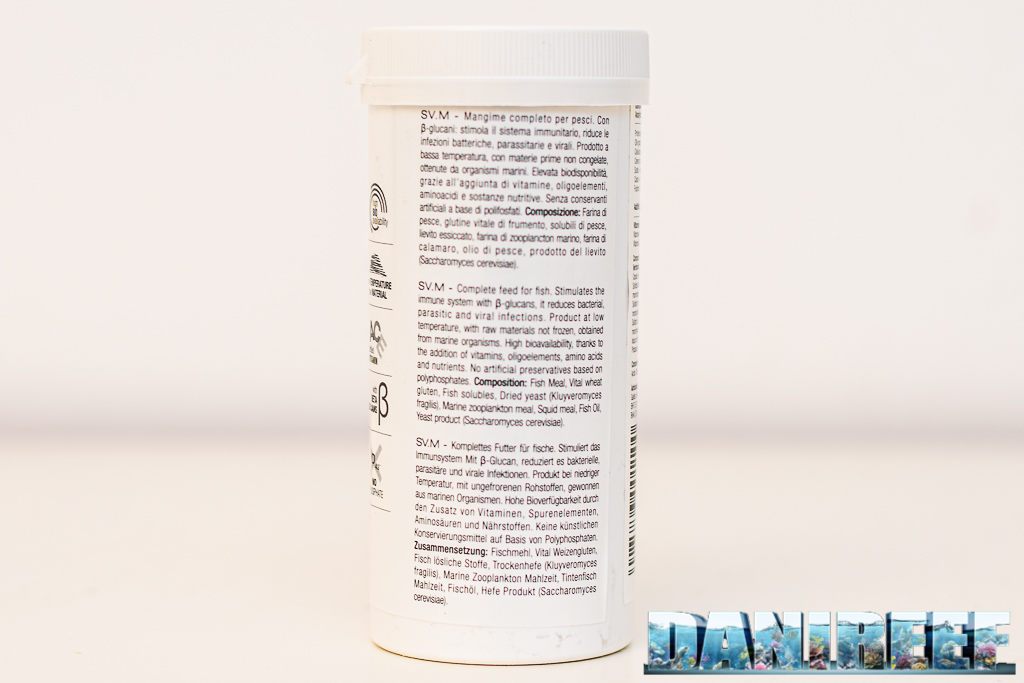
The nutritional analysis is very interesting, it is majority protein:
- Raw protein: 62%;
- Raw oils and fats: 11%;
- Raw cellulose: 0.8%;
- Ashes: 9.5%
- Sodium: 0.8%
- Calcium: 1.9%
- Phosphorus: 1.6%
- Other: 12.48%
The same analysis is reported in the following chart:
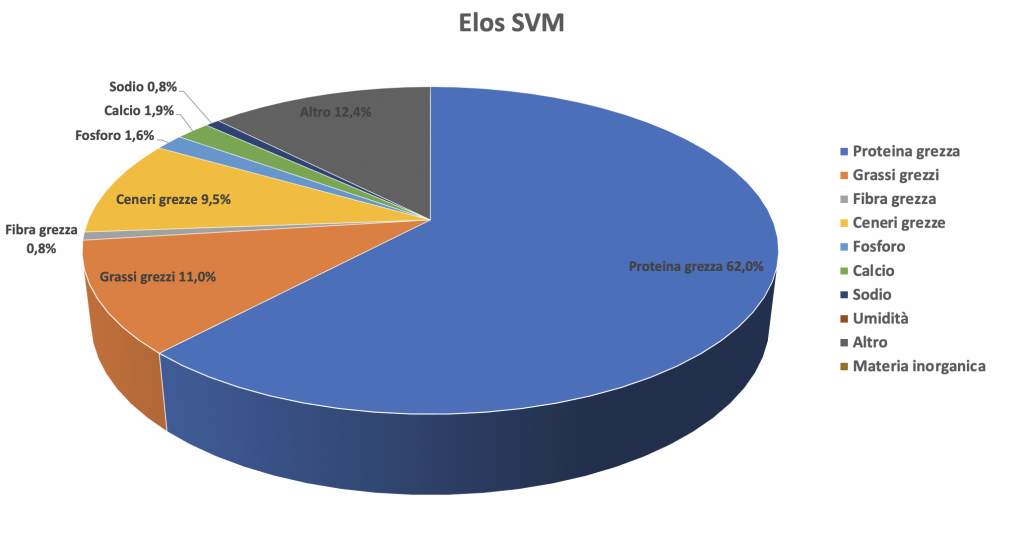
As we can see from the chart, the feed is mainly composed of proteins (62%) and it has 11% fats. For this reason it’s part of the caloric foods, perfect for fish that eat other fish or crustaceans and are tireless swimmers. The protein is greater than the average of similar feeds (51%), as well as the fats (9.9%), the fibers are less than usual, 0.8 compared to 1.6. The remaining part are ashes and something we have no indication of. These elements bring the amount of fill materials to 22%, a lot lower that the average of 34%. Elos declares that in the feed are sodium, calcium and phosphorous, and we’ve only seen that in feeds from Equo and XAqua, as well as in Hikari‘s and Aquaforest‘s. The values of these elements are in the average.
The vitamins
Now let’s see the analytic composition of vitamins, trace elements and additives:
- vitamin A: 6000 UI;
- vitamin D3: 1125 UI;
- ferric oxide: 942 mg;
- manganous sulphate monohydrate 46.2 mg;
- ferric sulphaye monohydrate 121 mg;
- zinc suplphate 246 mg;
- potassium iodide 2.6 mg
And here are the corresponding charts:
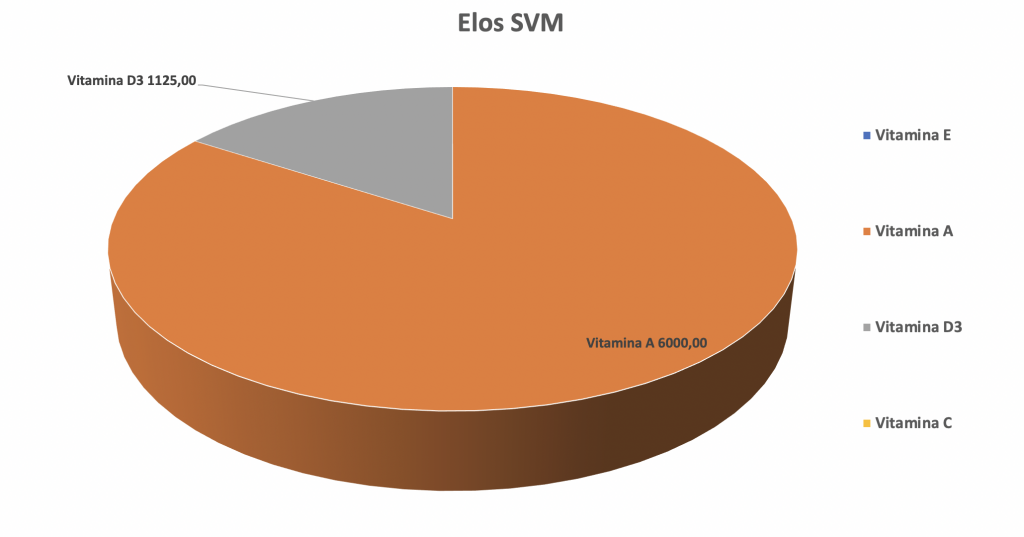
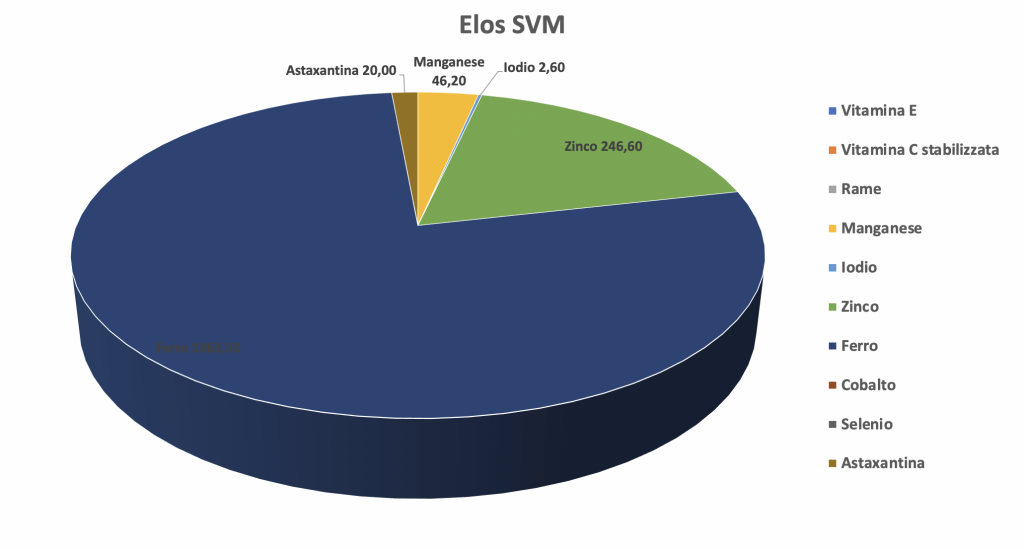
The first chart is the comparison among vitamins, and different from the usual, there is only vitamin A and D3, both present in lower quantities compared to the average of other feeds.
The vitamin A promotes a healthy growth, strengthens the eyesight, protects the skin and has a positive action on fecundity. When we consider the minerals, we can see that the iron is widely present both in form of ferric oxide, and on form of ferric sulphate monohydrate. After that the zinc is the second most present mineral. Finally, there’s astaxanthin, in small quantities.
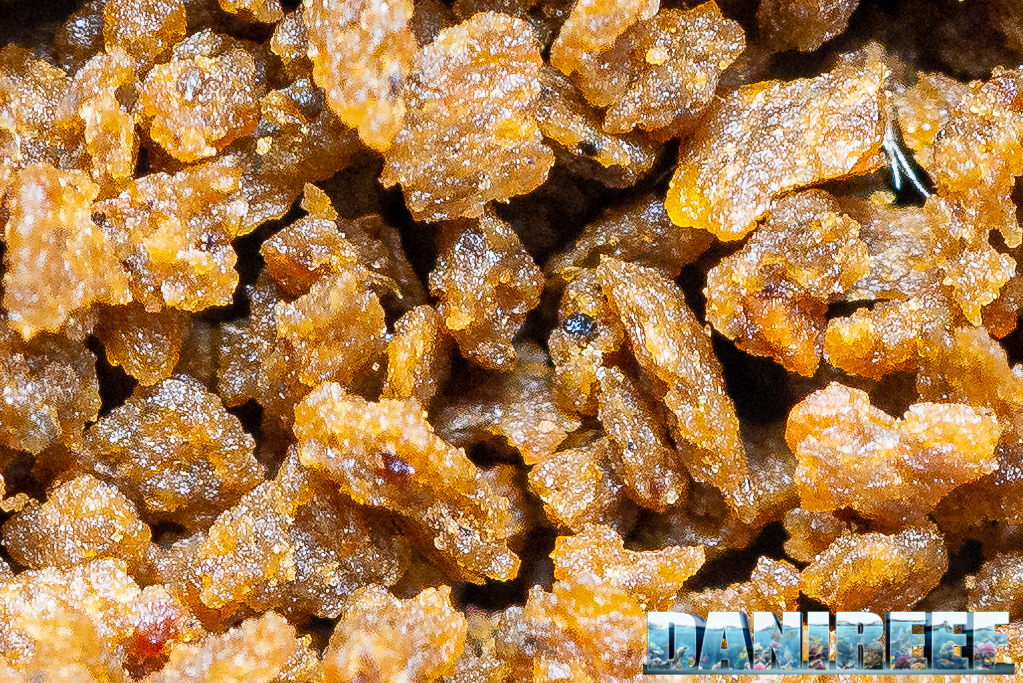
Notice the red coloration of the feed. And also the amalgam of the pellets! (zoom 1:1 with macro lens of 150 mm on a full frame camera)
Experience
As I said, I have used the the feed for a long time now; some my favorite fish have lived for 10 years and I almost exclusively use this feed.
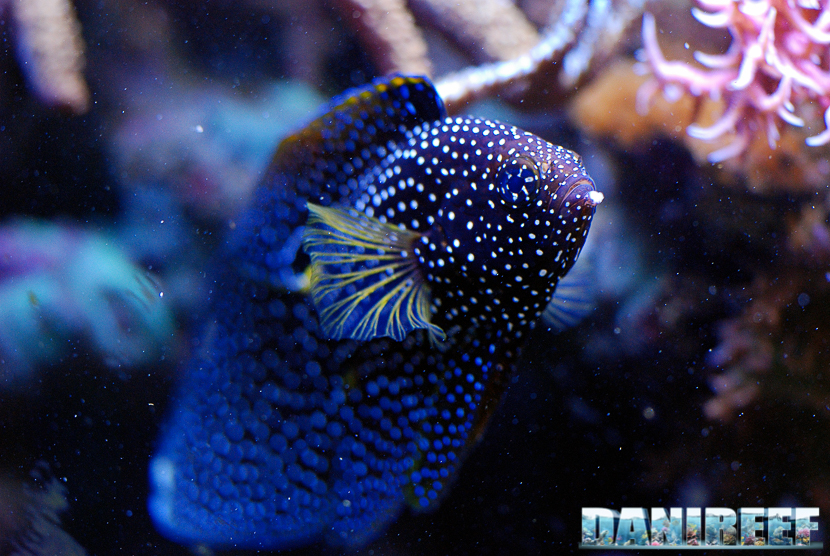
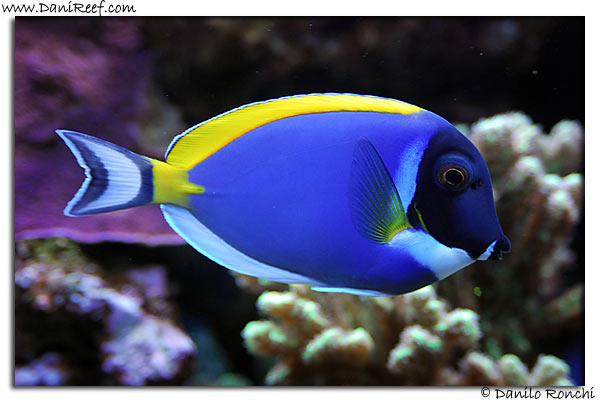


The cost of the feed
The 60 gram jar costs 12,87 euro and the 500 gram jar costs 59 euro. So it’s 21.45 cents per gram, which decreases to 11.8c per gram for the bigger jar, that (obviously) is a much better value.
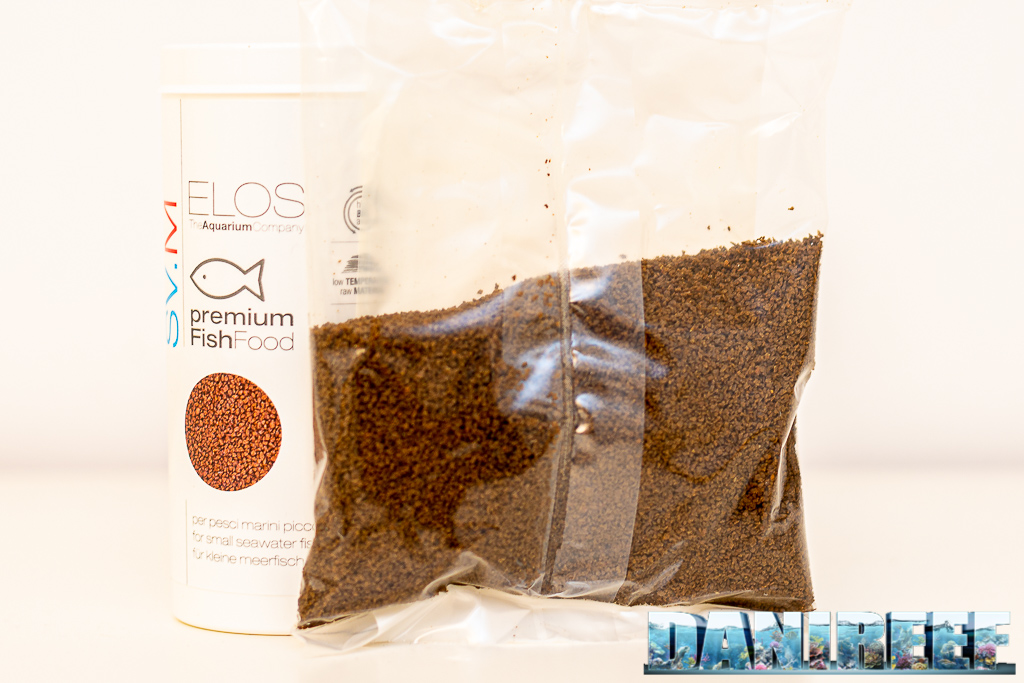
For comparison: Hikari Marine A costs 8.3 cents per gram, and the smaller Hikari Marine S is 11.2 cents per gram. Then we have 10.4 cents per gram for New Life Spectrum, 11.3 for XAqua Marine, 21 for Equo Menu Marino, 15.6 for Unica Gran Premium Plus, 12.3 for AquaForest Marine Mix S and 14.2 for Vitalis Marine Pellet.
For a deeper look at fish feeds we leave you to the following article. It’s a few years old now, but the information is still true: fish feeding.
[Translated by Agnese Poggi]










0 Comments